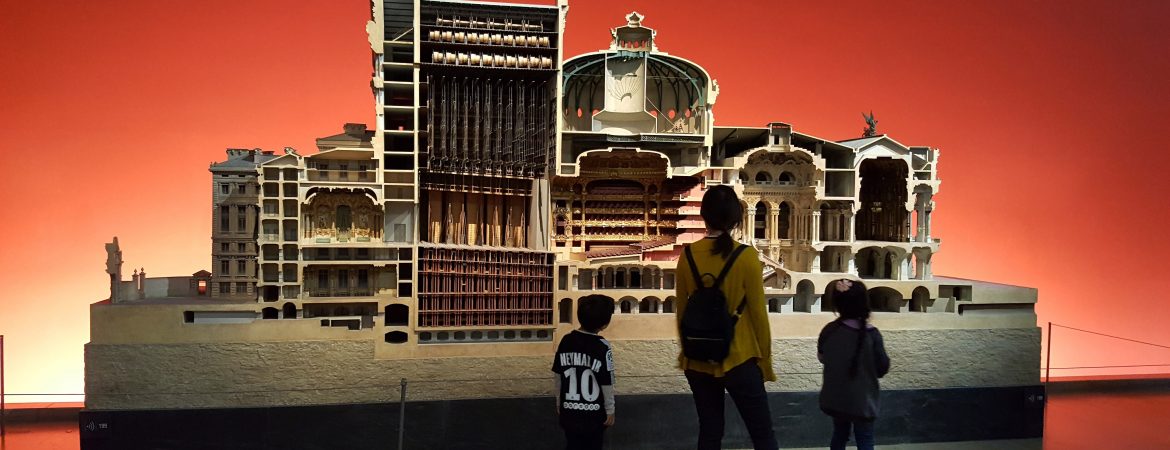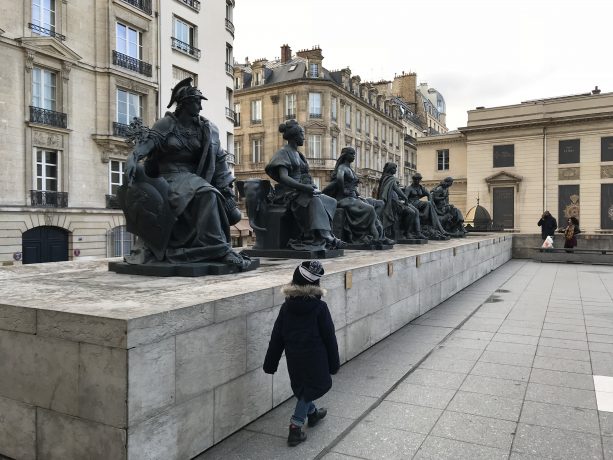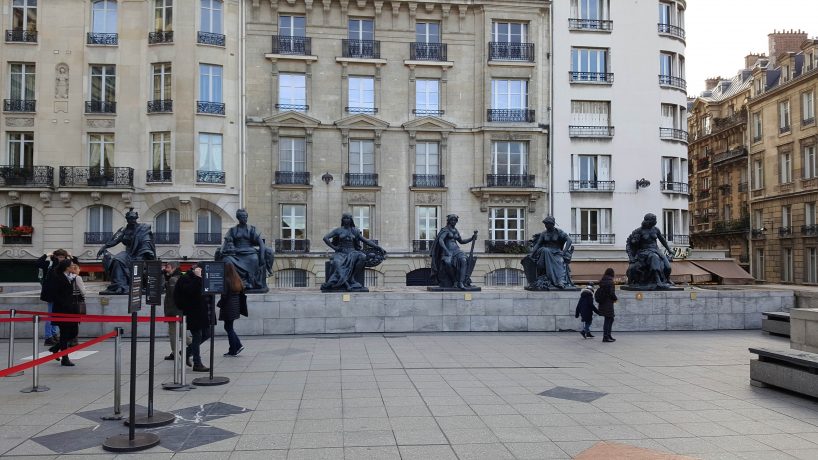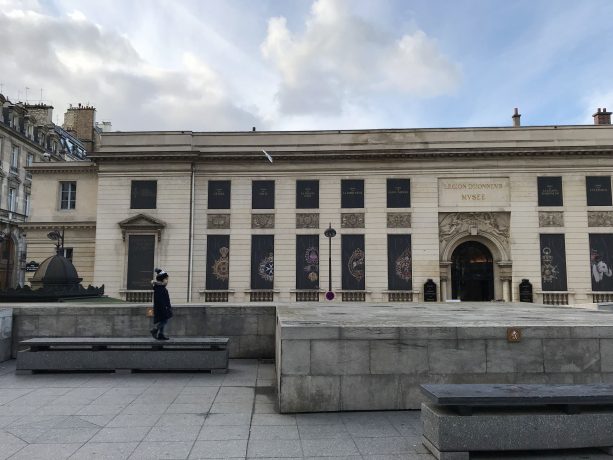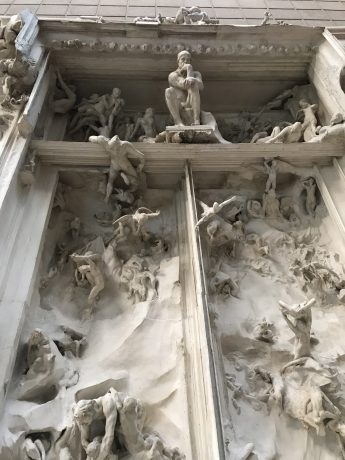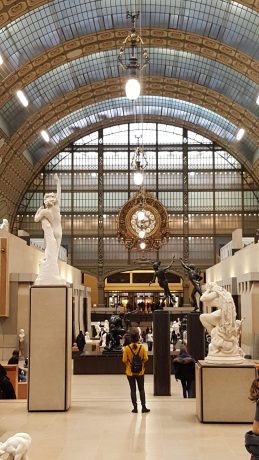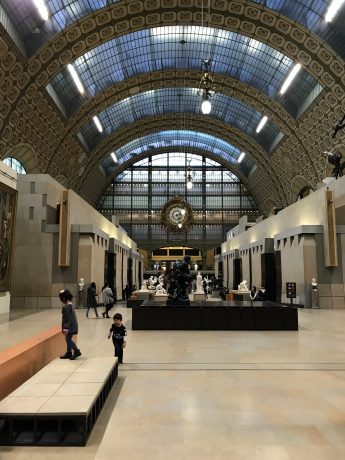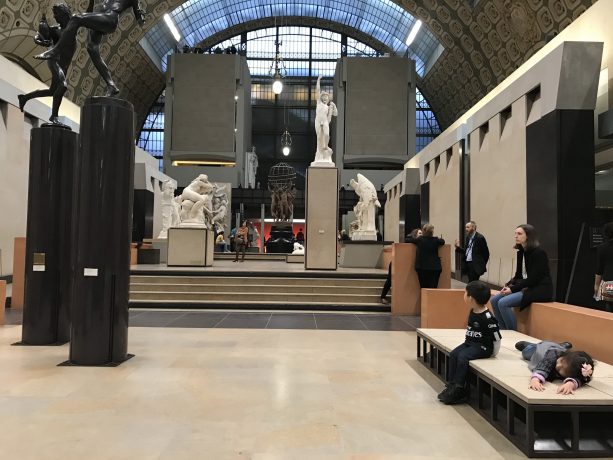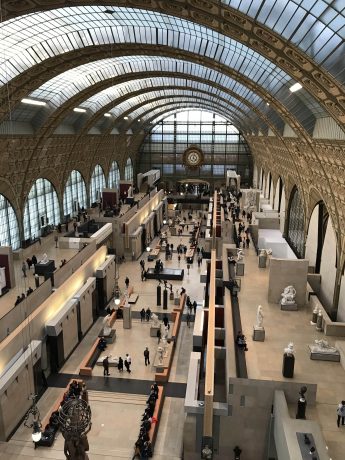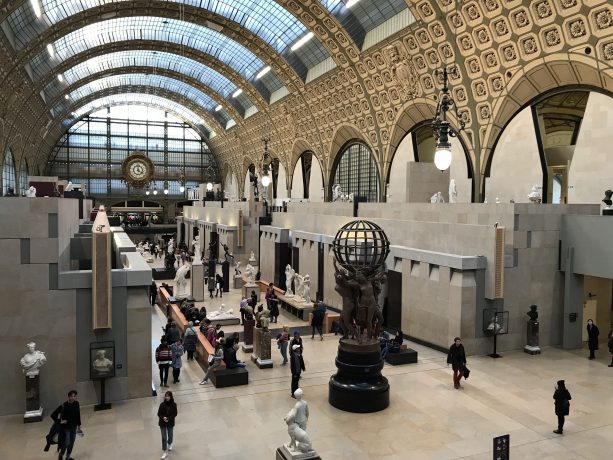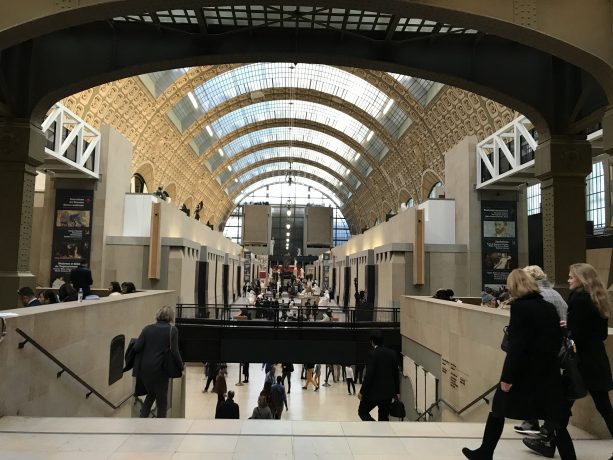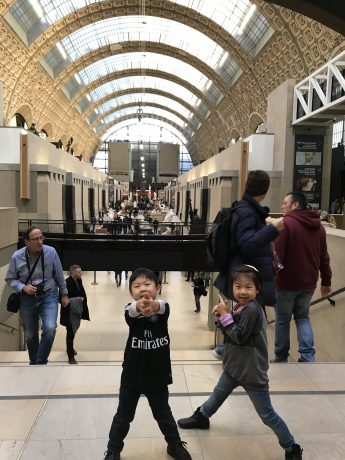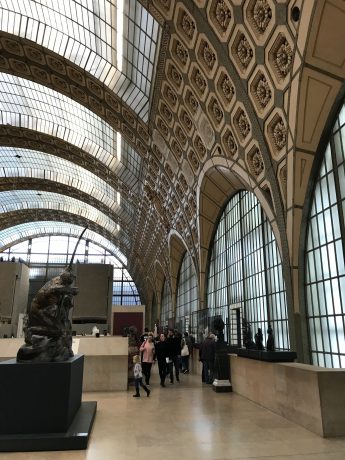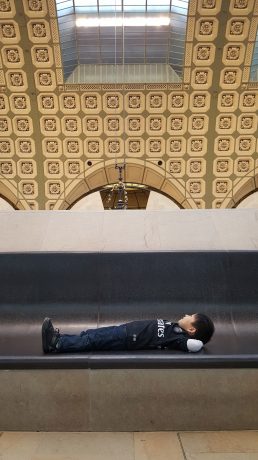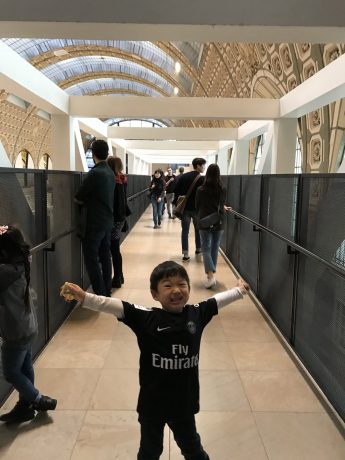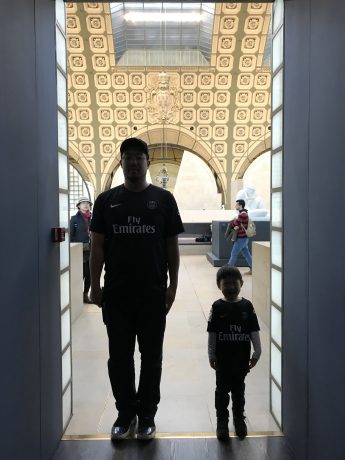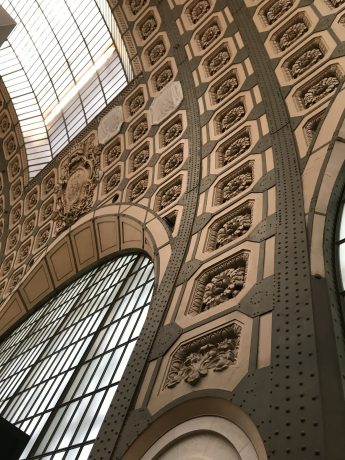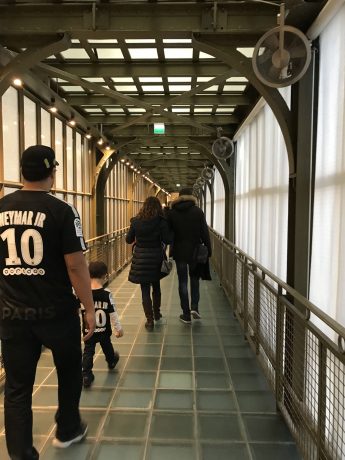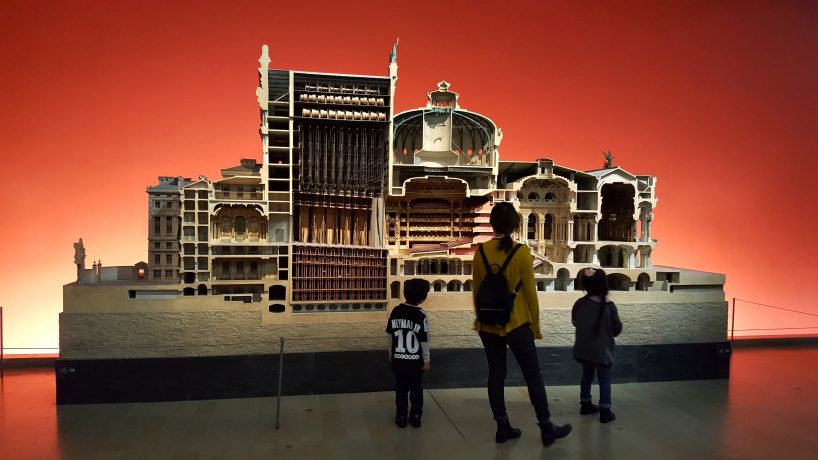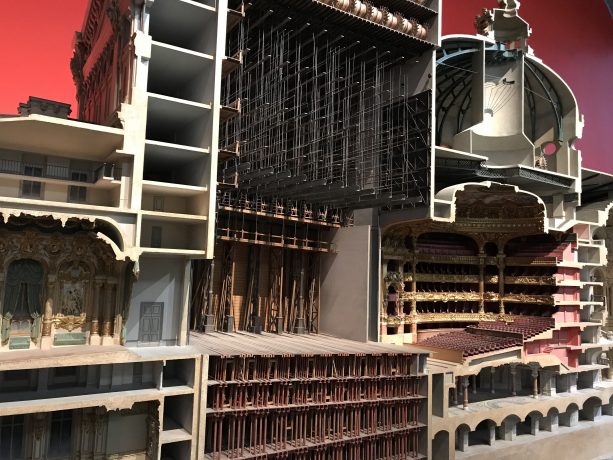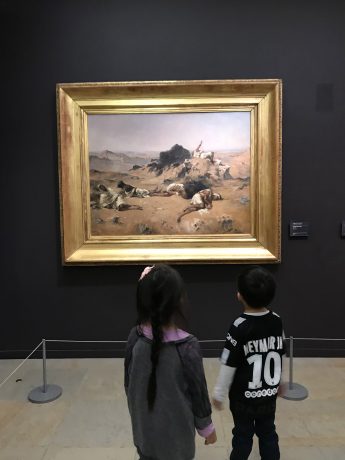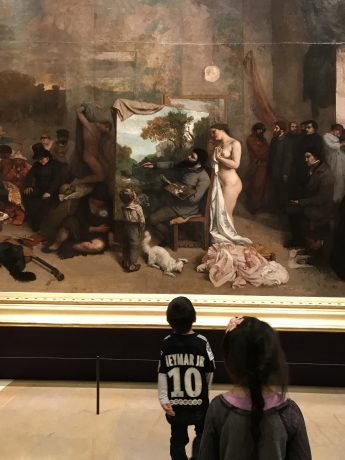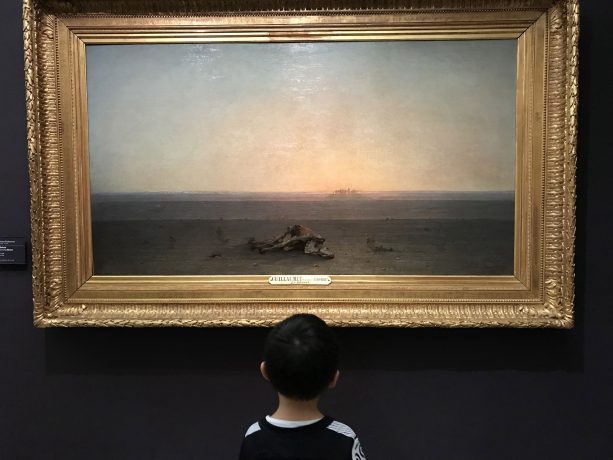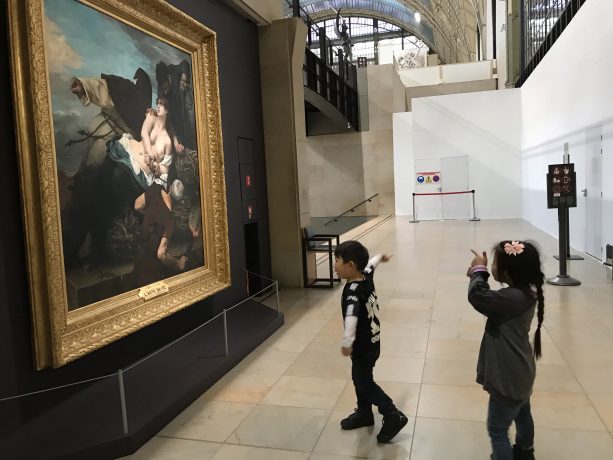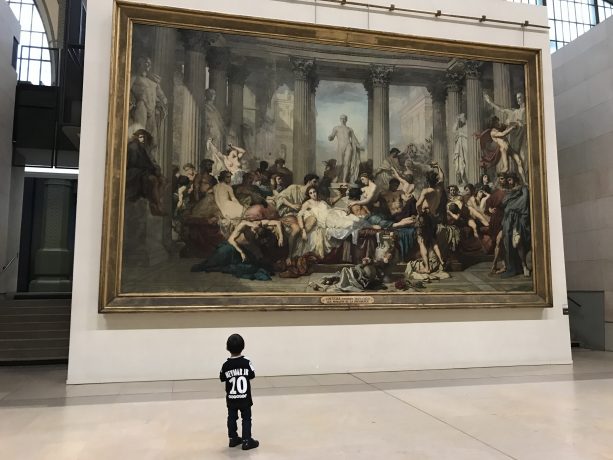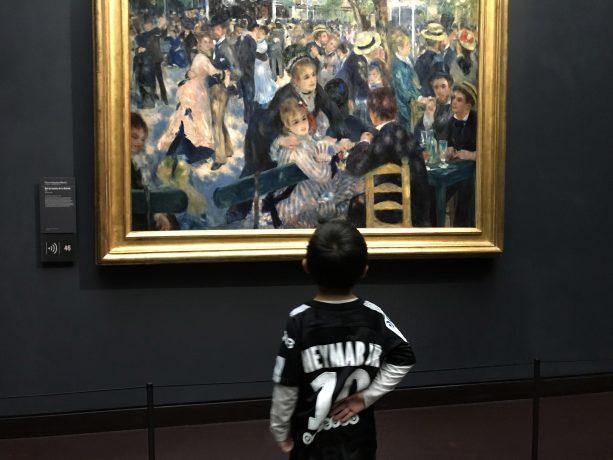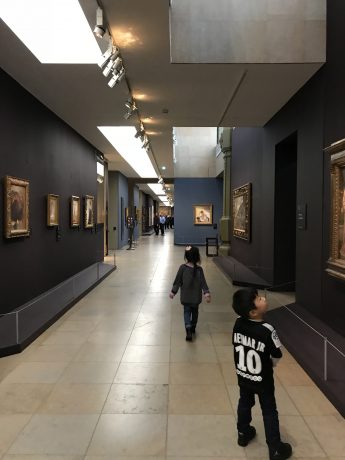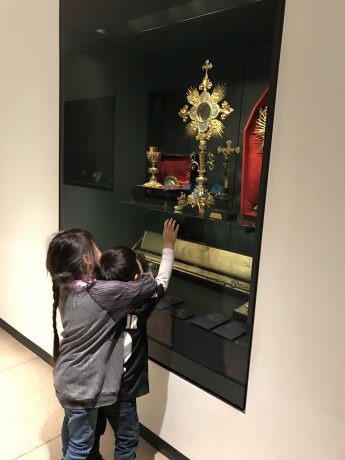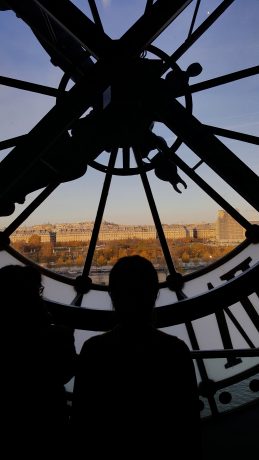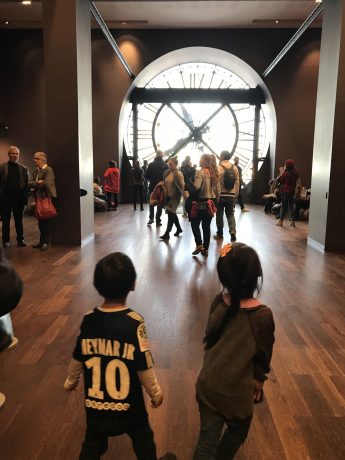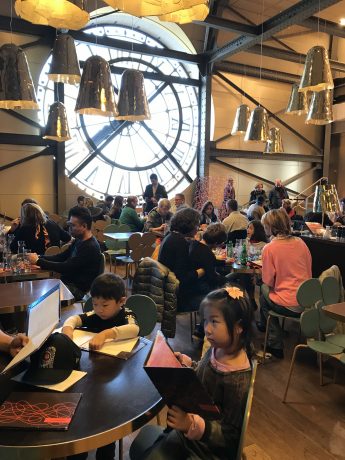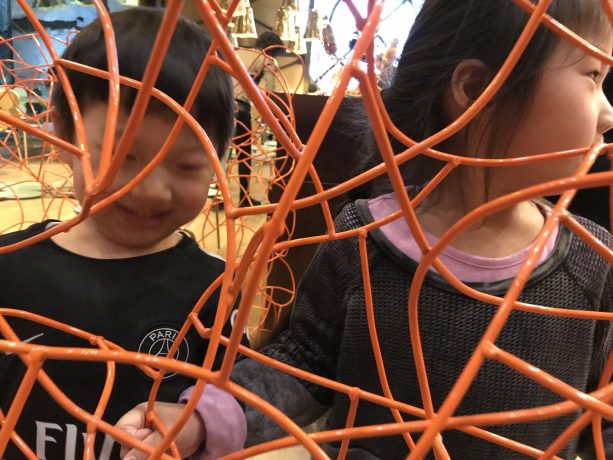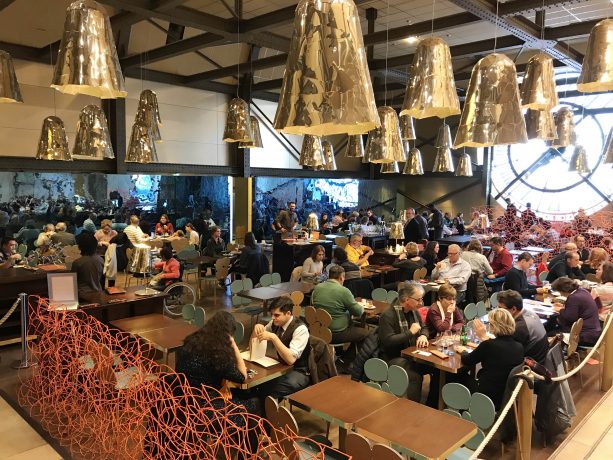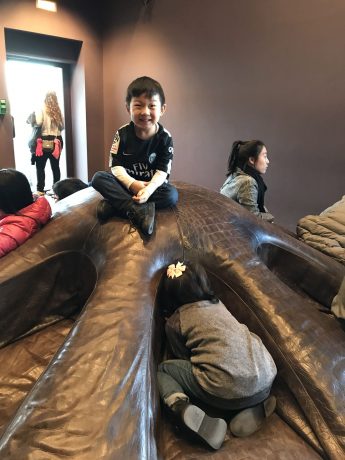While finishing up our warm (piping hot, actually!) roasted street vender chestnuts, we made our way out of the chilly Parisian air into the warm embrace of the fabulous Musee D’Orsay. This museum is a must-do mecca for any art history lover, as it houses some of the most important pieces in art, including Manet’s The Luncheon on the Grass, Renoir’s Bal du moulin de la Galette, Millet’s The Gleaners, among many others. Not only is the art collection a masterpiece it and of itself, going through the building which in its past life was once a train station is a truly memorable experience.
The Musee D’Orsay is located on the left bank of the Seine river, on the opposite side of the Tuileries Gardens in Paris. The museum is housed inside the former Orsay Railway station, completed in 1900. The architecture was said to “look like a Palais des beaux-arts..” by painter Edouard Detaille, and is considered by many as a work of art in and of itself. The building has served as a mailing center for prisoners of war During WWI, filming location including The Trial by Orson Wellss, and a hotel. After going through threats for demolition, it was deemed a historical monument in 1973 and eventually became the Musee D’Orsay, in 1986 and home of many of the works formerly housed inside the Galerie nationale de Jeu de Paume, the Louvre and Musee d’Art Moderne. 220,000 SF of floor space were added on four floors to house the growing collection of paintings, sculptures, photographs and furniture. The collection consists mainly of French art from 1848-1914 and currently holds the largest collection of Impressionist and Post-Impressionist masterpieces in the world by painters such as Monet, Manet, Van Gogh, and Renoir.
The museum offers many school group exhibition tours, as they try to connect youth to the art. They also hold a variety of lunch time and evening concerts, contemporary interpretations in the museum (they have a fantastic one currently, which I would be 100 percent loved to visit called “Orsay Through the Eyes of Julian Schnabel”), and also offer guided tours for kids.
Since it was my first visit to the museum, I was entranced by the iconic intricate ceiling and satisfying symmetric exhibition corridors. The perfectly curated way in which the artworks were hung -how each piece would lead to the next and period leading to the next while highlighting the Masters of each era, was truly harmonious. There were too many personal favorites to count as impressionism and post-impressionism is my most beloved time-period. As my husband and son took in the walkways and architecture, my daughter and I went through the halls, taking our pauses to stop at pieces that she recognized styles of, like pointillism, and to discuss the compositions of characters and landscapes and what that might have meant to the artist. The larger than life Renaissance works on the first level were my son’s clear favorites. He would stand in pause mesmerized as he would analyze the goings on of each scene was we walked by. Going through these halls during more crowded hours can be somewhat overwhelming, especially for young ones – I would recommend that at this museum (and any museum) to break in between the galleries at the benches in a more open and airy area to re-group, take a small snack or drink break if location allows, and allow a few minutes of play. This method always works for me personally, and was particularly helpful at the D’Orsay at the upper levels where my son wasn’t at all interested in the impressionist wing!
The beautiful archways and sunset on the horizon led to some fantastic photo opportunities. Taking in the view of the Louvre across the Seine River in sunset through the glass at the original clock was truly magical. There was an amazing leather amorphous furniture piece nearby and it was just the perfectly timed respite for the kids to be able to climb and play for a moment. The model of the Paris Opera House on the first level was a family favorite. We probably spent the most amount of time examining this piece out of all the others, as it was almost like the most ornate mini dollhouse in history. The model is amazingly intricate, with carvings of decorative and architectural details, staircases, and seats. In the same hall, a fun glass floor feature encasing a 3D model of Paris right below was interactive and fun. We stepped over the map pointing out buildings, streets and various monuments we would notice.
As we took our time going through the art at each floor the long way using staircases and suspended walkways, we started feeling hungry as supper time rolled closer. Luckily, the Café Campana was a close distance away so we made our way inside. The modern interiors inspired by Art Nouveau, was designed by the well-known Brazilian designers, the Campana brothers. It provided a visual breath of fresh air, a break from the traditional surroundings. The menu consisted of Parisian Brasserie style faire, which we thoroughly enjoyed. We left with full bellies and re-energized to explore the rest of the museum.
My art nerd self couldn’t help but snatch up a few items at the museum shop including felt lined IPad cover with the museum’s ceiling graphic (which was found on the sales rack, score!) and a casual watch painted with Monet’s Waterlillies. The kids picked out their usual shop items - never specifically marked with museum logo or theme, but a more generic fun book, marker set or puzzle – which was fine by me as I would always rather spend money on something they will actively play with! Out into the chilly air we went to journey back through the glow of Parisian moonlight, but not without another round of warm roasted street vendor chestnuts in tow from the friendly man at the museum square.
